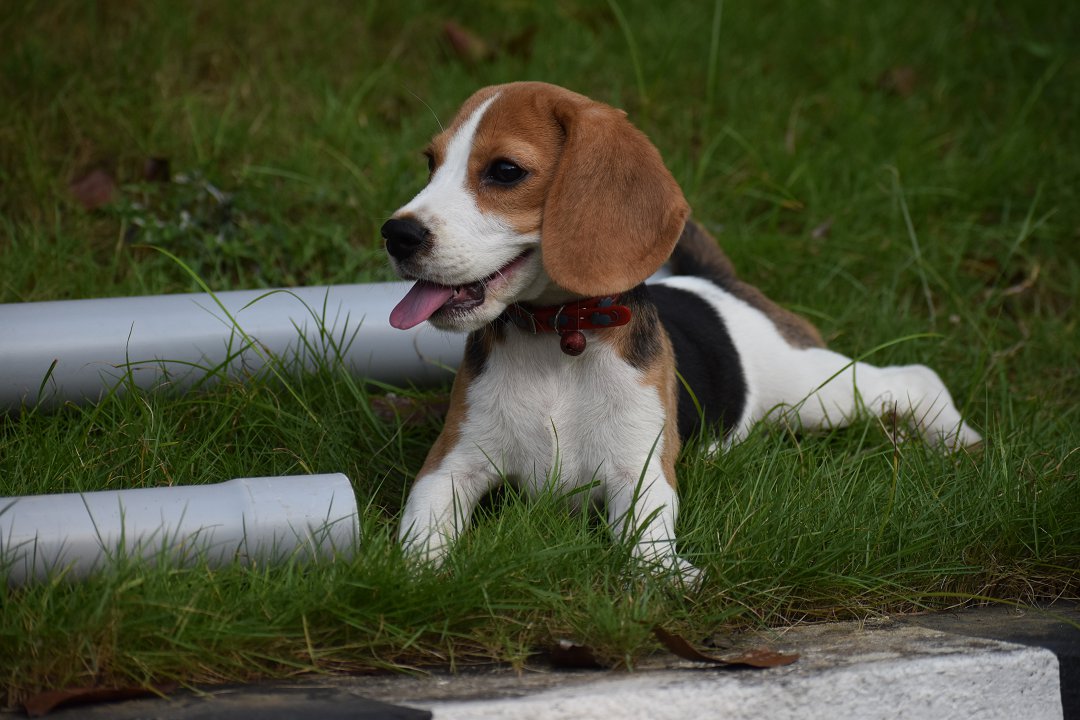Table of Contents
- 1 Introduction: Unraveling the Mystery: The Surprising Reasons Behind Beagle’s Small Size
- 2 The Science Behind Beagle’s Petite Stature: Exploring the Genetics and Factors at Play
- 3 Unlocking the Secrets: Understanding the Unique Characteristics That Make Beagles So Small
- 4 FAQs About: Why is My Beagle So Small?
- 4.1 1. Why is my beagle smaller than other beagles?
- 4.2 2. Can I do anything to help my small beagle grow bigger?
- 4.3 3. Are small beagles more prone to health issues?
- 4.4 4. Can I still train my small beagle like other beagles?
- 4.5 5. Is it possible to predict how big my small beagle will get?
- 4.6 6. Can small beagles live a long and healthy life?
Introduction: Unraveling the Mystery: The Surprising Reasons Behind Beagle’s Small Size
Have you ever wondered, “Why is my beagle so small?” It’s a common question among beagle owners, as these adorable pups often have a petite stature that sets them apart from other breeds. But fear not, because we’re here to unravel the mystery behind their small size.
Beagles are known for their compact build and small frame, which is a result of both genetics and other factors at play. While some may mistake them for miniature or undersized beagles, their small breed status is actually quite normal. In this article, we will delve into the science behind their petite stature, exploring the unique characteristics that make beagles so small. So, let’s unlock the secrets and discover the surprising reasons behind your beagle’s small size.
The Science Behind Beagle’s Petite Stature: Exploring the Genetics and Factors at Play
When it comes to beagles, their small size is often a topic of curiosity for dog owners and enthusiasts. Why is my beagle so small? This question can be answered by delving into the science behind their petite stature. Let’s explore the genetics and factors that contribute to the small size of beagles.
Genetic Factors
- Selective Breeding: Beagles have been selectively bred for centuries to maintain their small size. Breeders have focused on breeding smaller beagles to perpetuate their compact and petite stature.
- Dwarfism Gene: Some beagles may carry a dwarfism gene, which can result in a smaller size. This gene affects the growth plates in their bones, leading to shorter limbs and a smaller overall frame.
- Inbreeding: Inbreeding within the beagle breed can also contribute to their small size. It can result in a limited gene pool, leading to a higher likelihood of smaller offspring.
Environmental Factors
- Nutrition: Proper nutrition plays a crucial role in a beagle’s growth and development. If a beagle doesn’t receive adequate nutrition during their growth phase, it can impact their size and overall stature.
- Exercise: Regular exercise is essential for beagles to maintain a healthy weight and muscle tone. Lack of exercise or excessive weight gain can make them appear smaller than they actually are.
- Health Issues: Certain health conditions, such as hypothyroidism or malabsorption disorders, can affect a beagle’s growth and result in a smaller size.
Other Factors
- Age: Beagles typically reach their full size by the age of one year. If your beagle is still a puppy, they may still have some growing to do.
- Gender: Male beagles tend to be slightly larger than females, but the difference in size is generally minimal.
- Breed Standards: The American Kennel Club and other breed organizations have established standards for beagles, including their size. According to these standards, beagles should not exceed a certain height and weight.
Understanding the genetics and factors that contribute to your beagle’s small size can help you appreciate their unique characteristics. Remember, beagles come in various sizes, and being small doesn’t make them any less lovable or adorable. In the next section, we will explore the unique characteristics that make beagles so small, shedding light on their charming personality and physical traits.
Unlocking the Secrets: Understanding the Unique Characteristics That Make Beagles So Small
Beagles are renowned for their small size and compact build. If you’ve ever wondered why your beagle is so small, there are several factors at play that contribute to their petite stature. Let’s delve into the secrets behind this unique characteristic.
1. Genetic Factors
Beagles, like all dog breeds, have specific genes that determine their size. The genes responsible for a beagle’s small size are often inherited from their ancestors. Breeders selectively breed beagles with smaller frames to perpetuate this trait in future generations. These genetic factors play a significant role in determining the size of your beagle.
2. Breeding Practices
Selective breeding has been instrumental in maintaining the small size of beagles. Breeders carefully choose parents with smaller frames to produce offspring that exhibit the desired petite stature. By consistently breeding smaller beagles, breeders can ensure that the size trait remains consistent within the breed.
3. Developmental Factors
During the early stages of a beagle’s development, certain factors can influence their size. Proper nutrition and a balanced diet are crucial for healthy growth. If a beagle puppy doesn’t receive adequate nutrition, it may not reach its full size potential. Additionally, certain health conditions or hormonal imbalances can affect a beagle’s growth and contribute to their small size.
4. Natural Variation
While breeders strive to produce beagles within a specific size range, there is still natural variation within the breed. Some beagles may be slightly larger or smaller than the average size. This natural variation adds to the charm and uniqueness of each individual beagle.
5. Other Influences
Apart from genetics and breeding practices, other factors can contribute to a beagle’s small size. These include:
- Age: Younger beagles tend to be smaller in size and will continue to grow until they reach their full adult size.
- Gender: Female beagles are generally smaller than their male counterparts.
- Exercise and activity levels: Beagles that are more active and engage in regular exercise may have a leaner and smaller build.
In conclusion, the small size of beagles can be attributed to genetic factors, selective breeding practices, developmental influences, natural variation within the breed, and other individual factors such as age, gender, and exercise levels. Understanding these unique characteristics can help you appreciate the intricacies of your beagle’s petite stature.
FAQs About: Why is My Beagle So Small?
1. Why is my beagle smaller than other beagles?
Beagle size can vary due to genetics and other factors. Some beagles may have inherited genes for a smaller stature, while others may have experienced growth stunting during their early development.
2. Can I do anything to help my small beagle grow bigger?
While genetics play a significant role in determining a beagle’s size, ensuring a healthy diet, regular exercise, and proper veterinary care can support their overall growth and development.
3. Are small beagles more prone to health issues?
Small beagles may be more susceptible to certain health problems, such as joint issues or dental concerns. Regular check-ups with a veterinarian and maintaining a balanced diet can help mitigate these risks.
4. Can I still train my small beagle like other beagles?
Absolutely! Size doesn’t hinder a beagle’s ability to learn and be trained. Beagles, regardless of their size, are intelligent and eager to please. Consistent training methods and positive reinforcement will help them thrive.
5. Is it possible to predict how big my small beagle will get?
While it may be challenging to predict the exact size a small beagle will reach, observing their growth patterns and comparing them to breed standards can provide a general idea of their potential adult size.
6. Can small beagles live a long and healthy life?
Yes, small beagles can live a long and healthy life with proper care. Regular exercise, a balanced diet, routine veterinary check-ups, and lots of love and attention contribute to their overall well-being and longevity.






Leave a Reply